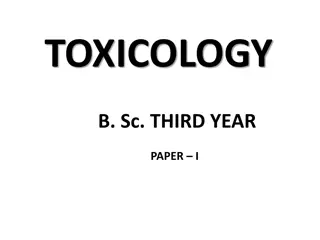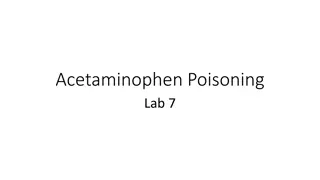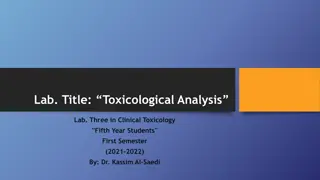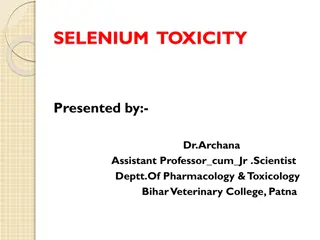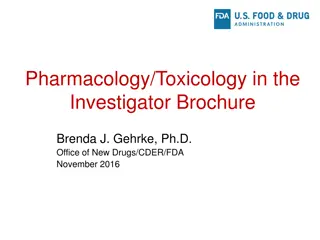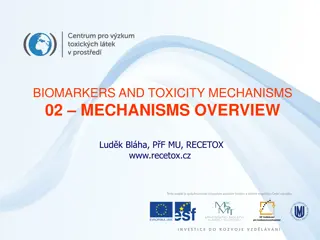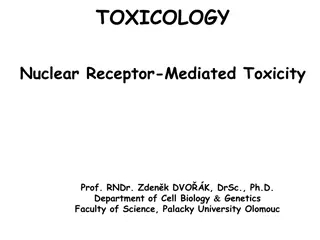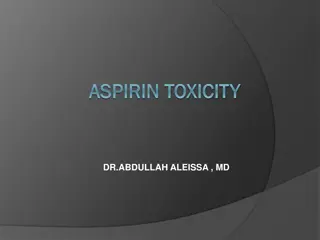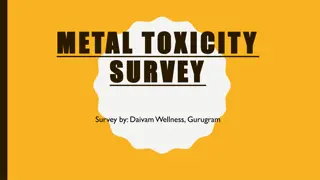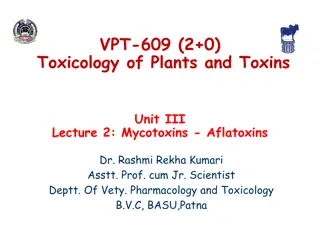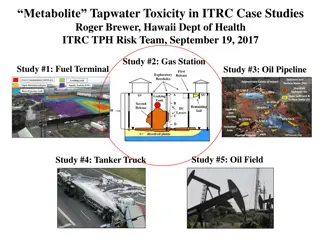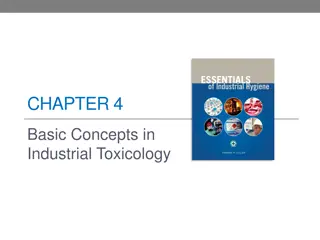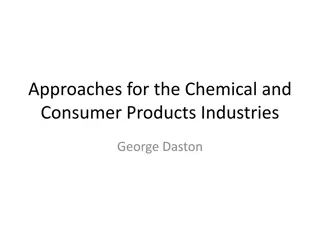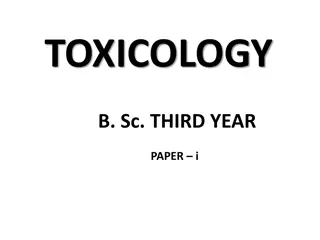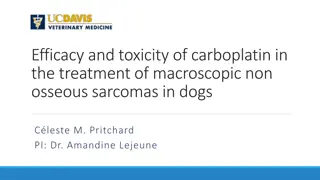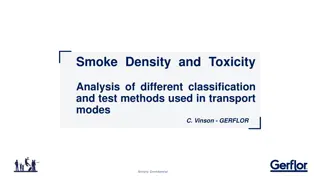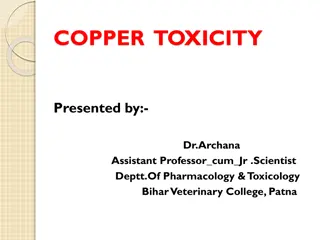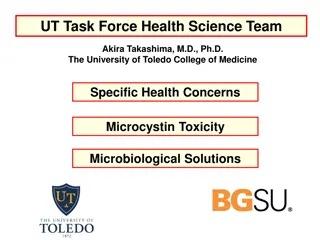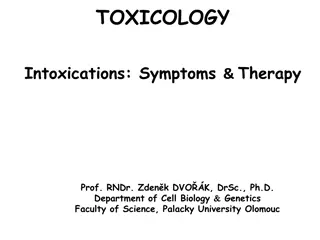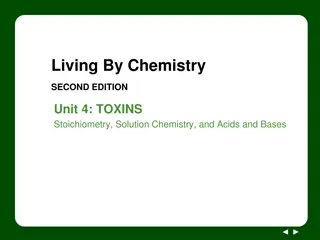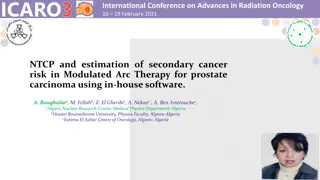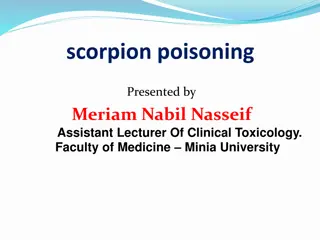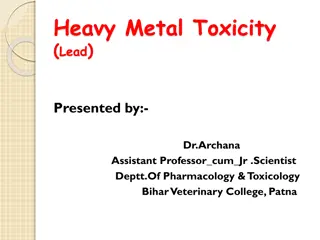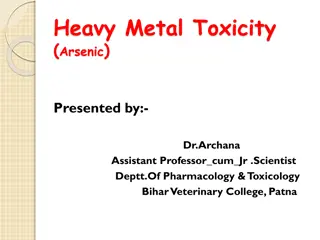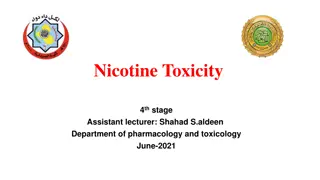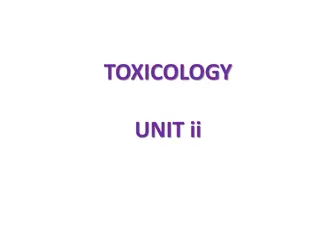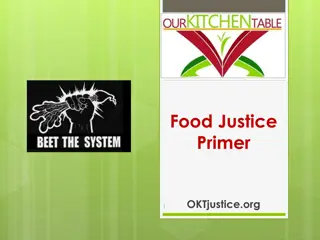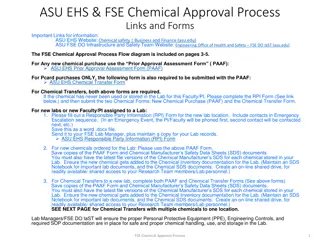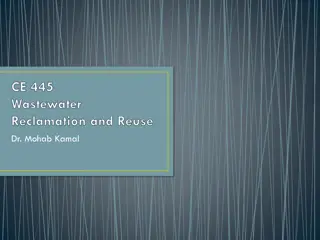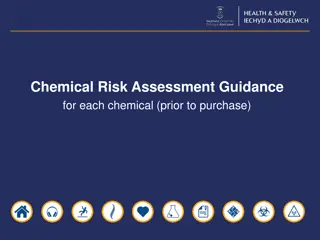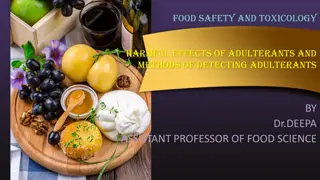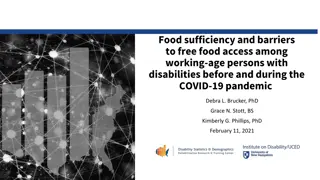Introduction to Toxicity and Toxicology in Food Chemical Risk Assessment
This module introduces the concept of chemical toxicity and the discipline of toxicology in relation to food chemical risk assessment. It touches upon historical aspects, such as the case of Socrates' death by hemlock, the contributions of Mathieu Joseph Bonaventure Orfila in forensic toxicology, and the famous quote by Paracelsus emphasizing the importance of dosage in toxicity. Toxicology is shown as a crucial field in examining the effects of chemicals on human health.
Download Presentation

Please find below an Image/Link to download the presentation.
The content on the website is provided AS IS for your information and personal use only. It may not be sold, licensed, or shared on other websites without obtaining consent from the author. Download presentation by click this link. If you encounter any issues during the download, it is possible that the publisher has removed the file from their server.
E N D
Presentation Transcript
Chapter 1.2: Introduction to Toxicity and Toxicology It is not intended in this module to produce a detailed and comprehensive course in toxicology However, in order to discuss food chemical risk assessment we need as a starting point to introduce the concept of chemical toxicity, and the discipline of toxicology which is used to examine chemical toxicity in a structured way. 1
Historical aspects of Toxciology Estimated 40,000 deaths due to ergotism Ebers scrolls Trait des Poisons Bonaventura Orfila Everything is a poison it is only the dose that makes it not a poison (Paracelsus, 1493-1541) Socrates conviction ? ~1550 B.C. 399 B.C. 0 ~1000 ~1500 ~1800 2
Example: Socrates was ultimately sentenced to death by drinking a hemlock- based extract Hemlock contains the pyridine alkaloids coniine, N- methylconiine, conhydrine, pseudoconhydrine and -coniceine. The most toxic of these is coniine, which has a chemical structure similar to nicotine. . Coniine Coniine containing plants have actions similar to nicotine. Clinical effects will depend on the dose of coniine or coniine-like alkaloid ingested. The nicotinic effects are biphasic, with stimulation followed by CNS depression and paralysis of respiratory muscles. Initial symptoms may be vomiting, confusion, respiratory depression, and muscle paralysis. Death, when it occurs, is usually rapid and due to respiratory paralysis. http://toxnet.nlm.nih.gov/cgi- bin/sis/search/a?dbs+hsdb:@term+ @DOCNO+3474 3
Mathieu Joseph Bonaventure Orfila (24 April 1787 12 March 1853) was a Spanish born French toxicologist and chemist, often seen as the founder of the science of toxicology. Role in Forensic Toxicology Role in Forensic Toxicology If there is reason to believe that a murder or attempted murder may have been committed using poison, a forensic toxicologist is asked to examine pieces of evidence such as corpses and food items for poison content. At Orfila's time the primary poison in use was arsenic, but there were no reliable ways of testing for its presence. Orfila developped new techniques and refined existing techniques in his first treatise, Trait des poisons, greatly enhancing their accuracy. In 1840, Marie LaFarge was accused for the murder of her husband using arsenic. Mysteriously, although arsenic was available to the killer and was found in the food, none could be found in the body. Orfila was asked by the court to make further investigations. He discovered that the test used, the Marsh Test, had been performed incorrectly, and that there was in fact arsenic in the body, allowing LaF arge to be found guilty. And arsenic is still poisonous (Bangladesh) from arsenic naturally occurring in water 4
Paracelsus (1493-1541) Alle Ding' sind Gift und nichts ohn' Gift; allein die Dosis macht, dass ein Ding kein Gift ist. "All things are poison and nothing is without poison, only the dose permits something not to be poisonous." 5
One of the most important concepts in toxicology The dose makes the poison LOW EXPOSURE = LOW RISK 6
What does it mean that something is Toxic? Let us get some suggestions! 7
Other words (expressions) for toxic? Poisonous Health impairing or to some extent Hazardious Lets get an explanation on the last ! http://map.ais.ucla.edu/go/1002739 8
What can be toxic? An element (lets get examples)! A chemical compound (examples)! A product (examples)! Naturally occurring/ man made Any difference? 9
Introduction to Toxicity What can be Toxic? A solid, liquid or gas element (examples)! Lead (Pb) (metal found in some crops and seafoods). Arsenic (As) (metalloid in grains such as rice) Mercury (Hg) (converted to methylmercury in seafood, marine plants etc) Calcium, copper, iron, sodium, magnesium, manganese, porassium (essential dietary minerals but can be toxic at high cncentratons) 10
Introduction to Toxicity What can be Toxic (cont d).... A chemical compound (examples)! Sodium Chloride (NaCl also known as salt!) Carbon dioxide (CO2) Ethanol (CH3CH2OH) Cyanide (HCN) 11
Introduction to Toxicity What can be Toxic (cont d)..... A product (examples)! Agricultural and veterinary chemicals pesticides, insecticides, fungicides Pollutants lubricants, cleaning agents, dioxins and PCBs Food additives preservatives, artificial colours, acidifiers etc 12
Introduction to Toxicity What can be toxic (Cont d).... Naturally Inherent Plant Toxicants Examples Macromolecular polyphenolic substances (hydrolysable and condensed tannins) Toxic fatty acids/lipids Non-protein amino acids Alkaloids Furanocoumarins Polyacetylenes Mono-, sesqui- and diterpenes; and Toxic glycosides of various types (glucosinolates, cyanogenic glycosides, saponins) 13
Introduction to Toxicity What can be toxic (Cont d).... Naturally Inherent Plant Toxicants Examples Cyanogenic glycosides in casava and apricot kernels produce HCN. Tannins in processed products such as tea, coffee and wine. Proteinase inhibitors in legumes (e.g. Soybeans) Alkaloids in foods and beverages (e.g. Caffeine) Pyrrolizidine Alkaloids in grains, teas and herbal supplements Gossypol in cotton seed oil 14
A chemical compound (or a mixture) that is toxic may e.g. be called: A Poison A Toxin A Biotoxin A toxicant What are the differences? http://en.wikipedia.org/wiki/Toxin http://en.wikipedia.org/wiki/Toxicant 15
What is toxicology? The study of toxins/toxicants (=toxic substances) Toxic substances disturb the physiological balance to the extent that the organism becomes ill Multidisciplinary field of science building on basic disciplines 16
What is Toxicology Some References to consider for further reading: 1. Analytical toxicology (A.Wallace Hayes, Principles and Methods of Toxicolog, 3rd Edition; Casarett and Doull s Toxicology, 5th Editiin) ; http://www.who.int/ipcs/publications/training_poisons/analytical_toxicology/en/ind ex.html 2. Clinical toxicology (Ellenhorn s Medical Toxicology, 5th Edition). 3. Occupational toxicology (A.Wallace Hayes, Principles and Methods of Toxicolog, 3rd Edition; Casarett and Doull s Toxicology, 5th Edition) 4. Environmental toxicology (A.Wallace Hayes, Principles and Methods of Toxicolog, 3rd Edition; Casarett and Doull s Toxicology, 5th Edition) 5. Regulatory toxicology (A.Wallace Hayes, Principles and Methods of Toxicolog, 3rd Edition; Casarett and Doull s Toxicology, 5th Editiin); http://www.ncbi.nlm.nih/gov/pubmed/11814699 17
Quantitative aspects: Dose-response relationship Dose Acute/chronic toxicity Quantal (all or nothing) Graded response (degree of symptoms in a single animal) Species specific 18


